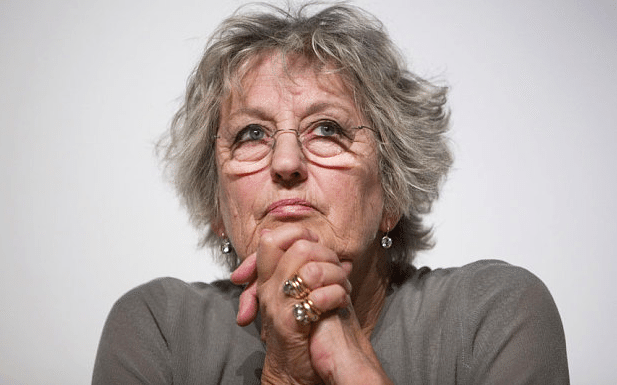Education
A Flawed Defense of Safe Spaces in the New York Times
Ironically, what is really needed is the restoration of the entire college campus as a safe space for people of all perspectives.

In a recent New York Times op-ed, Wesleyan University president Michael S. Roth offers a defense of “safe enough” spaces on our college and university campuses. Roth seeks to establish a middle ground between proponents who aspire “to make sure all students are made to feel welcome in or outside the classroom” and critics who see safe spaces as “sanctimonious ‘safetyism’—counterproductive coddling of students who feel fragile.” So, he asks, “what’s a university to do?”
“We should begin,” writes Roth in answer to his own question, “by destigmatizing the notion of safe spaces and stop talking about them as if they were part of a zero-sum ideological war.” He provides historic examples of space spaces for employees and managers in post-World War II manufacturing, group therapy in psychiatry, and later feminist and gay liberation community building. None of this was controversial, he suggests.
But Roth’s examples are not really on point if the risk of safe spaces perceived by their critics, as Roth puts it, is of “groups…enclosing themselves in bubbles that protect them from competing points of view.” The creation of opportunities for open discussion between employees and managers, or for sharing of experiences among mental health patients, serves to burst bubbles, not insulate participants from other points of view. The building of community among feminists and gays may have reinforced narrow perspectives but their purpose was political, not educational. Safe spaces that encourage cooperation or facilitate political action are far different from safe spaces that insulate from discomfort.
Colleges and universities exist, first and foremost, to educate their students, not to consolidate shared interests, facilitate advocacy, or mask intellectual and emotional disagreements. Certainly those with common interests and shared experiences should be free to associate among themselves in clubs, advocacy groups, and private gatherings. And there is nothing wrong with colleges encouraging and facilitating such confabs as part of the life of the university, not to mention the right to freedom of association.
Roth also recounts historic threats to the physical safety of women and minorities by way of underscoring colleges’ responsibilities as parens patriae. Surely no one doubts that colleges and universities are entrusted with the physical and psychological welfare of their students, particularly undergraduates. But threats of physical and psychological harm bear little resemblance to the harms college safe spaces are intended to protect against. The former are obstacles to education (and usually illegal). The latter are essential to education. As Roth acknowledges, “our classrooms should never be so comfortable that intellectual confrontation becomes taboo or assumptions go unchallenged because everyone’s emotional well-being is overprotected.”

There is a difference between true psychological harm and hurt feelings. Perhaps Roth’s “safe enough” standard is meant to recognize that difference, but the reality on many campuses is that safe spaces encourage, in Roth’s words, the “siloing of perspectives” against which “[u]niversities must push back.”
There is also an important difference between student-organized clubs for people of shared interests or experiences and college safe spaces created for the express purpose of insulating students from discomfort. The former are invitations to collegiality. The latter are obstacles to the development of a true intellectual community.
Roth contends that the provision of “safe enough” spaces “is not saying that students need protection from argument or the discovery that they should change their minds.” Rather “[i]t is saying that students should be able to participate in argument and inquiry without the threat of harassment or intimidation.” Exactly right. It should be the mission of every college and university to assure that students of every perspective and experience are free to express their opinions. But the reality is that safe spaces are often part and parcel of a larger mission to control freedom of expression on college and university campuses. Indeed, safe spaces will not be thought necessary if the larger mission is accomplished—they serve as an interim protection until the allegedly hurtful language, opinions, and facts are excised.
Ironically, what is really needed is the restoration of the entire college campus as a safe space for people of all perspectives. Roth contends that “safe enough” spaces are a “call for schools to promote a basic sense of inclusion and respect that enables all students to thrive…[and] to explore differences without fear….” Amen to that, too. More than 40 years in the academy has taught me that there is exclusion and fear among some students, but seldom among those for whom safe spaces have been created. The vast majority of conservative-minded students fear reprisal and are effectively excluded by the subtle and not-so-subtle disdain of those who have come to dominate the academy. It is the rare and brave conservative student willing to challenge the orthodoxy of the academy.
As the United States Supreme Court has noted on several occasions, free speech is threatened not only by express restrictions, of which there are many in college speech codes, but also by regulations and actions with a “chilling effect.” Rather than creating safe spaces for those threatened by disagreement, colleges and universities should make every effort to ensure their entire campuses are safe for the pursuit of knowledge. We will not achieve that objective by segregating our campuses into ethnic and ideological factions.






